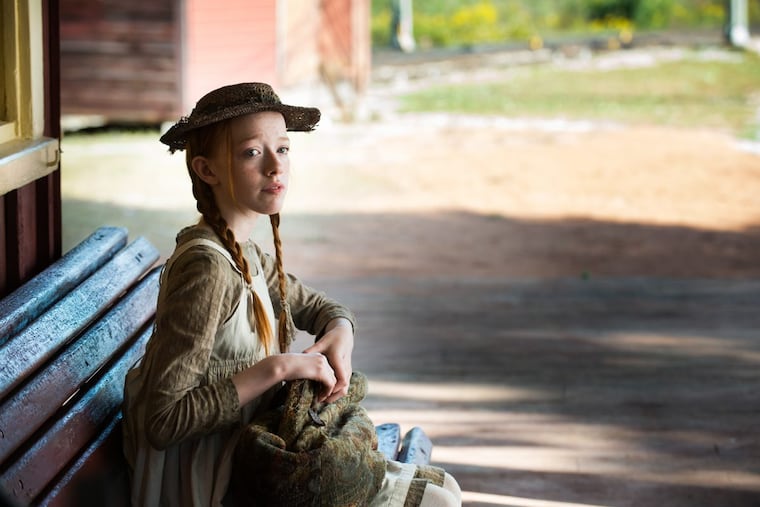Netflix’s ‘Anne with an E’ finds the edge in an old story
“Breaking Bad” veteran Moira Walley-Beckett’s “Anne of Green Gables” series exposes a little of the darkness that was always just below the surface of the children’s classic.

What happens when a writer from Breaking Bad takes on one of the most beloved characters in children's literature?
Anne of Green Gables — now a Netflix series called Anne with an E — gets noticeably darker. Or does it?
As someone who's read, and reread, every book in the Lucy Maud Montgomery series, who believes the 1985 mini-series with Megan Follows is the gold standard, and who only last summer escorted a bemused husband and son through the Prince Edward Island farmhouse that inspired Montgomery, I think I qualify as a die-hard Anne fan.
And I've always thought her story had a dark side.
An orphan girl is accidentally sent to aging siblings Matthew and Marilla Cuthbert (R.H. Thomson and Geraldine James), who'd asked for a boy — not to love, but to employ on the farm. Anne Shirley (Amybeth McNulty) always had bigger worries than her red hair, freckles, and lack of puffed sleeves.
When Anne of Green Gables was first published in 1908, Montgomery's audience would have known how tenuous a position Anne occupied in the 1890s — a girl without family or means who'd spent much of her childhood in an orphanage or as an unpaid child-minder with no value to most prospective families beyond her ability to work.
Moira Walley-Beckett's adaptation, which makes its U.S. debut on Friday, departs from the canon in the two episodes I've seen, but it's written for the 21st century. However much it lingers on the dangers that lie just outside the doors of Green Gables, it's likely to seem tame to viewers brought up on Harry Potter and The Hunger Games.
Walley-Beckett — who won an Emmy for the Breaking Bad episode "Ozymandias" and who went on to create Starz's very dark ballet mini-series Flesh and Bone — also focuses on class distinctions that wouldn't have needed spelling out in Montgomery's day, making the family of Anne's "bosom friend" Diana (Dalila Bela), for instance, far more aristocratic than they appear to be in the books.
Read more: Breaking Bad writer goes dark(er) in Flesh and Bone
But then Montgomery's readers, young and not so young, would have been familiar with Louisa May Alcott's Little Women (scheduled for a new PBS-BBC Masterpiece coproduction), and with books like Margaret Sidney's Five Little Peppers, where the characters' genteel poverty could involve real deprivation while at the same time not marking them as unfit for the company of richer neighbors. We may not have eradicated poverty, but we have largely stopped romanticizing it.
The late Colleen Dewhurst's Marilla is a tough act to beat, but James more than holds her own in a role that requires her not to fall in love with her orphaned charge overnight or to know how to proceed when her reserve begins to crumble. Thomson's Matthew is, thankfully, less talkative than the version Martin Sheen played in last fall's PBS movie, but he's also more of an action hero than the character has ever been.
McNulty is carrying the most on the shoulders Anne would hate to hear called skinny, but she seems so far to be up to the challenge. She's particularly good in conveying the anger that's never far from the surface in a character who's accustomed to rejection but who believes she deserves more.
Anne's never been a simple character. McNulty doesn't play her as one.